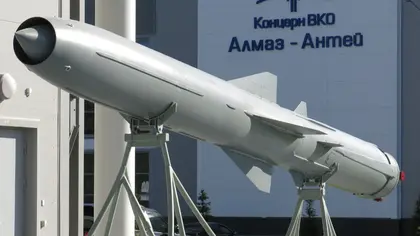Thursday, July 20 was the third night in a row that Russia launched mass missile attacks against the city of Odesa, in barrages making use of the P-800 Onyx anti-ship missile.
This weapon has been fired sporadically at land targets by Russia since it launched its full-scale invasion but their concerted use in recent days poses particular problems in southern coastal Ukraine.
- Find the newest Ukraine news pieces that came out today.
- Check the most up-to-date Ukraine news reports from today.
JOIN US ON TELEGRAM
Follow our coverage of the war on the @Kyivpost_official.
According to Yuri Ihnat, spokesman of the Air Force of the Armed Forces of Ukraine, the missile – designed to target naval ships – poses a number of technical challenges when used against land targets, not least being the speed with which they fly.
“Onyx missiles are designed to destroy watercraft, and ships, it flies at a speed of 3000 km per hour, that is, very fast,” he said on the telethon on the morning of July 20.
It is not just the speed that complicates the ability to detect and intercept the weapon, but also its flight profile.
In its final approach to a target, it flies at a height of around 15 meters or even lower as it is designed as a “sea-skimming” missile.
“On the march [at launch], it can rise high, and when entering the target, it can actually fly 10-15 meters above the water to destroy the ship,” Ihnat said.
“It is difficult to fight with such missiles, but you can influence them in the end through electronic warfare,” he added.

‘We Need to End That Horrible, Horrible War’ – Ukraine at War Update for Dec. 23
In an earlier interview, Ihnat said that what was needed to combat the Onyx was an “anti-ballistic system,” by which he was probably referring to equipment such as the US Patriot or French SAMP/T missile defense systems.
Both systems are held by Ukraine but not in the quantities needed to fully counter the threat in all areas of the country.
“Anti-ballistic systems could cope with the X-22 [another anti-ship missile] and, possibly, the Onyx missiles. The fact that the X-22 and Onyx are not too accurate is good, but the fact that they are difficult to shoot down is bad” the Air Force spokesman noted.
What is the "Onyx" missile?
The P-800 Onyx missile, the export version if which s known as “Yakhont,” is a supersonic medium-range anti-ship missile developed during the late 1970s in the USSR.
It can be launched from surface ships, submarines and land-based equipment.
It is believed the missiles being currently used to attack southern Ukraine are being fired from the K-300P Bastion-P mobile coastal defense vehicle, which Russia first deployed to Crimea after its occupation in 2014.
The missile has a range of up to 300 kilometers in its default trajectory and a range of 120 km in a low-altitude trajectory.
It is launched using a rocket booster which separates within seconds allowing, the missile to propels itself with a kerosene-powered ramjet motor.
It can reach an initial altitude of up to 14 kilometers and speeds of up to 750m/s (Mach 2.2).
On approaching the target, the missile descends to a 10 – 15 m altitude to avoid detection.
The Onyx missile's warhead can vary in mass depending on the specific version and purpose, either a 200 kilogram high explosive or 250 kilogram semi-armor piercing warhead.
You can also highlight the text and press Ctrl + Enter






